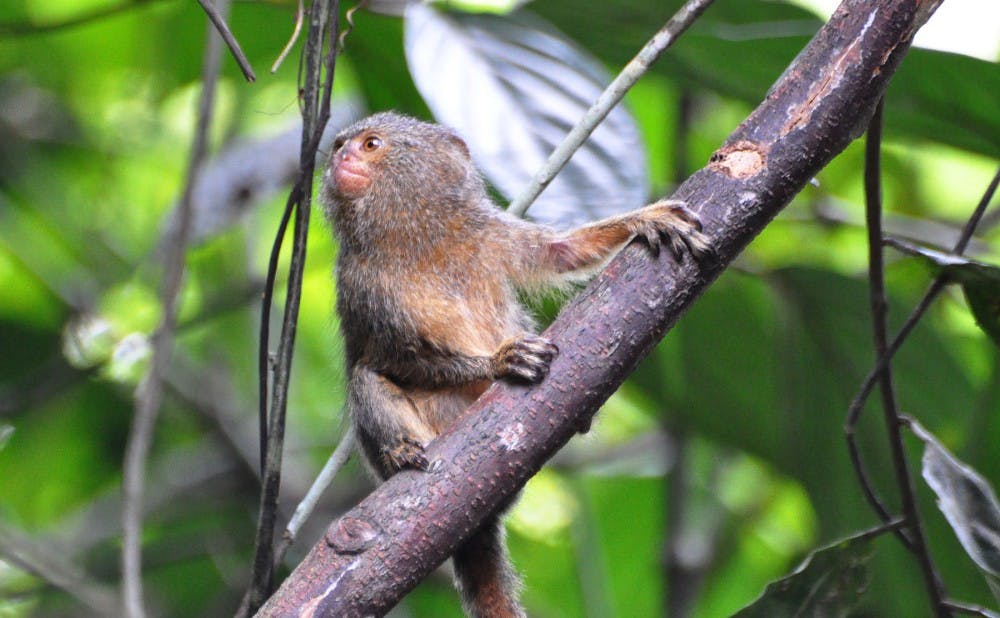For years, scientists have argued that brainpower is the principal factor underlying human uniqueness. A new Duke study, however, calls this hypothesis into question.
By examining brain metabolic rates—a measurement of how much energy the brain uses—the study found that humans and several other mammals have brains that use similar amounts of energy. Such a finding raises doubts about the theories that propose atypical brain energy as an explanation for unique human characteristics.
“The conclusion that we were able to draw from our data is that the hypothesis isn’t true—that there are actually lots of other primates and even some other non-primate close relatives of humans that have a brain just as expensive for their body metabolism as humans,” said Doug Boyer, assistant professor in evolutionary anthropology and first author of the study.
Arianna Harrington, a graduate student in evolutionary anthropology who is also an author of the study, explained that very few measurements exist of brain metabolic rates in animals because of the difficulty of obtaining such information. Whereas researchers can ask humans to sit still and track brain activity with a positron emission tomography scan, gathering the same data for animals becomes far more invasive.
Therefore, the team drew upon a previous study that tied brain metabolic rate to the size of the artery-containing canals that deliver blood to the brain.
“Because blood flow rates have been correlated with metabolic rates of the brain, [the scientists who came up with the measurement] thought that the sizes of these arterial canals could be used as a way to say something about how much different brains cost,” Harrington said.
Since the researchers could measure how large these canals were in species whose brain metabolic rates were already known, this allowed them to predict the metabolic rates of different animals, Harrington added. This revealed that humans, pygmy marmosets and pen-tailed treeshrews all have similar brain metabolic rates, which indicates that the measurement is a dubious indicator of human uniqueness.
However, Harrington did note that the small amount of data available might have had an effect on the conclusions drawn.
“It’s hard to be really sure of your findings with this, partially because we have so few data points for actual measured brain metabolic rates,” she said.
Boyer explained that with this new information, many long-held beliefs about human evolution may have to be re-examined.
For example, some scientists have suggested that a human’s ability to accumulate a large amount of fat is directly tied to a unique brain metabolic rate, Boyer noted. These scientists argued that having an increased percentage of fat in the body would function as reserved power for an energy-hungry brain in the case of being unable to eat for several days.
Yet pygmy maromosets and pen-tailed treeshrews—which have similar metabolic rates as humans—have far less body fat, which led Boyer to question the validity of the fat hypothesis.
“That ultimately makes us rethink how we talk about the challenges that humans faced during their evolution,” he said.
The study did reveal differences in brainpower between two groups of animals. Boyer added that primates and their close relatives have more energy-hungry brains compared to rabbits and rodents. Because these animals descended from a common ancestor, this suggests that some factor in the evolutionary process caused a divergence in brain energy requirements, he explained.
Going forward, Harrington said that she hopes to examine the arterial canals and metabolic rates in a larger range of animals to “put primate and human evolution in the wider context of mammals.”
Boyer noted that this new information will allow the team to test more hypotheses, including one stating that the number of neurons in an organism is correlated with energy usage of the brain.
“Previously, it had been assumed that the number of neurons in the brain was what was directly driving up the cost of the brain,” he said. “Well, now we can go back and compare neuron count against predicted brain metabolism or arterial canal size.”
As for why humans seem to be uniquely intelligent among animals, Boyer explained that the debate has been raging for years. Many theories—on such topics as brain size, relative brain size and brain metabolic rate—have been put forth and subsequently questioned or denied. However, he added that comparing the number of neurons in an organism may be an accurate indicator of cognitive skills.
“If you look at humans that way, they do seem to stand out as fairly unique among mammals,” Boyer said.
Get The Chronicle straight to your inbox
Signup for our weekly newsletter. Cancel at any time.

